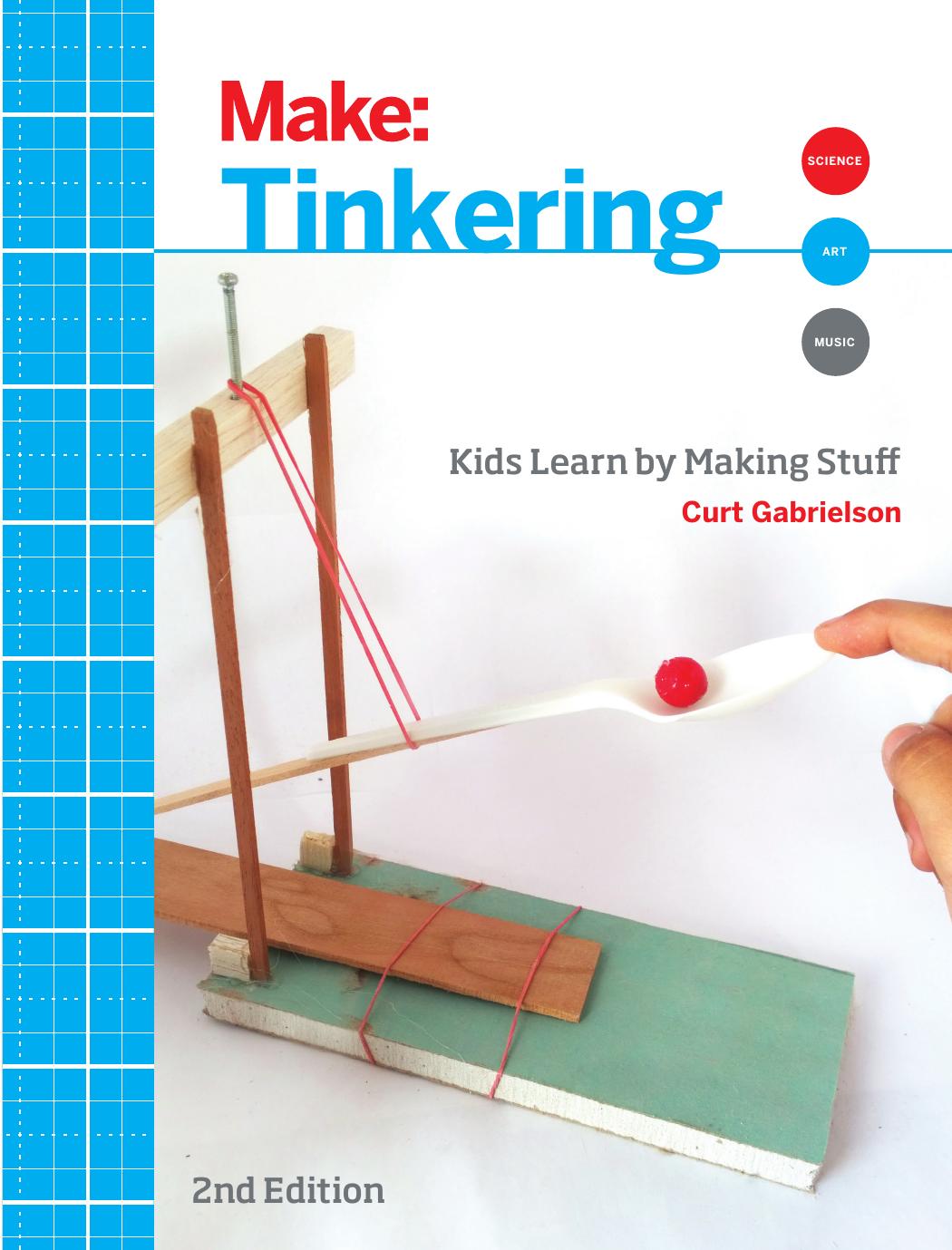Tinkering by Curt Gabrielson

Author:Curt Gabrielson
Language: eng
Format: epub, pdf
Tags: TECHNOLOGY & ENGINEERING / Technical & Manufacturing Industries & Trades
ISBN: 9781449360962
Publisher: Maker Media, Inc
Published: 2013-09-16T16:00:00+00:00
Process is more important than product. Sometimes kids will finish tinkering on a project, realize they are dissatisfied with it, chuck it in the trash and walk away. Don’t worry: they still gained from the experience. While we’d all love to see completed tinkering projects proudly hung on the wall, it’s just not going to happen all the time. Most finished products will be mediocre (by definition), and I can say from vast personal experience that only a few will be worth keeping long term. But my experience with all the duds was just as valuable as that with the keepers. Which leads us to the undeniable fact that…
Mistakes are critically important. You want your kids to achieve success, but you also want them to reap the benefits of failure and repeated trials before that success. The kid who fails a time or two before getting it right will walk away with more knowledge, more skills, and more confidence than the kid who nails it the first time. Everyone in the room must be aware that mistakes are part and parcel of the tinkering process. Indeed, a mistake is an opportunity for the student to advance developmentally. You as the facilitator hold the key to making sure they make that advance, and don’t just walk away all bummed out. It’s primarily a matter of communication and encouraging a broad vision.
Know when to step aside. Now hear this: everything I lay out elsewhere about supporting kids tinkering, dealing with questions, dishing out answers, working with difficult kids, scaffolding, etc. can be put on hold if everyone is tinkering along fine. Remember, one of your goals was to get the kids to tinker independently of you, and if they’ve got it, you can move away. Not too far: you can start up a side project related to the one they’re doing, do a bit of organizing, fix a model; anything you want so long as you stay active near their tinkering. (It is a bad idea to sit down and read a book—you’re the leader, and they’ll follow.) You can keep up a conversation with them to monitor how they’re doing, but don’t think you have to be in their face all the time. You are important, but your role is facilitator; they’ll learn mostly from the stuff.
Don’t be preoccupied by this, but take a stab at connecting students’ observations to theory in the canon if you can. In high-school and college lab courses, you often progress down a narrow experimental path toward a specific result that illustrates a theory you’ve learned in the textbook. This is good and indispensable in the process of coming to accept the theories as correct. When you tinker, you often don’t have as well controlled an environment, but you can often make and agree on observations that lead to conclusions that align well with a given theory.
An example is the magnet activity in this book: play with magnets then read magnetic field theory; your observations will tidily match the theory.
Download
This site does not store any files on its server. We only index and link to content provided by other sites. Please contact the content providers to delete copyright contents if any and email us, we'll remove relevant links or contents immediately.
Whiskies Galore by Ian Buxton(41938)
Introduction to Aircraft Design (Cambridge Aerospace Series) by John P. Fielding(33092)
Small Unmanned Fixed-wing Aircraft Design by Andrew J. Keane Andras Sobester James P. Scanlan & András Sóbester & James P. Scanlan(32764)
Craft Beer for the Homebrewer by Michael Agnew(18196)
Turbulence by E. J. Noyes(7978)
The Complete Stick Figure Physics Tutorials by Allen Sarah(7338)
Kaplan MCAT General Chemistry Review by Kaplan(6900)
The Thirst by Nesbo Jo(6877)
Bad Blood by John Carreyrou(6583)
Modelling of Convective Heat and Mass Transfer in Rotating Flows by Igor V. Shevchuk(6406)
Learning SQL by Alan Beaulieu(6237)
Weapons of Math Destruction by Cathy O'Neil(6215)
Man-made Catastrophes and Risk Information Concealment by Dmitry Chernov & Didier Sornette(5956)
Digital Minimalism by Cal Newport;(5704)
Life 3.0: Being Human in the Age of Artificial Intelligence by Tegmark Max(5516)
iGen by Jean M. Twenge(5385)
Secrets of Antigravity Propulsion: Tesla, UFOs, and Classified Aerospace Technology by Ph.D. Paul A. Laviolette(5333)
Design of Trajectory Optimization Approach for Space Maneuver Vehicle Skip Entry Problems by Runqi Chai & Al Savvaris & Antonios Tsourdos & Senchun Chai(5037)
Pale Blue Dot by Carl Sagan(4953)
